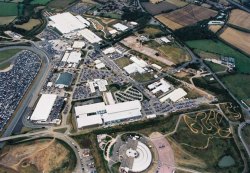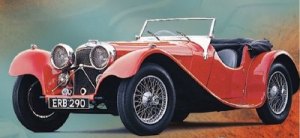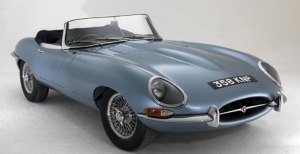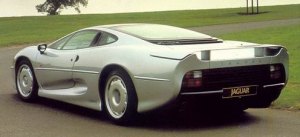
| - |
Production plants: Castle Bromwich (XF, XJ, F-Type), Solihull (XE, F-Pace)
Contract production in Austria (by Magna Steyr): Graz (E-Pace, I-Pace)

FY2019/20: 140,593 units
FY2018/19: 180,198 units
FY2017/18: 174,560 units
FY2016/17: 172,800 units
FY2015/16: 94,449 units
FY2014/15: 76,930 units
FY2013/14: 79,307 units
FY2012/13: 57,812 units
FY2011/12: 54,039 units
FY2010/11: 52,993 units
FY2009/10: 47,418 units
2008: 65,350 units
2007: 60,485 units
2006: 74,953 units
2005: 89,802 units
2003: 118,918 units
2002: 130,000 units, including 73,600 X-Type
2001: 100,770 units
2000: 90,031 units
1999: 75,312 units
1998: 50,200 units
FY2020/21 sales by models:
XE: 18,441 units
XF: 9,993 units
XJ: 970 units
F-Type: 5,752 units
E-Pace: 20,488 units
F-Pace: 26,291 units
I-Pace: 15,734 units
Reference:
https://www.jaguarlandrover.com/investor-relations
Strangely, Jaguar owns the marque "Daimler". Gottlieb Daimler, the inventor of motor car, set up his UK subsidiary in 1896 but the company was sold after his death. In 1960, Jaguar bought the Daimler factory in Conventry to cope with sales expansion and by the way got the right of the Daimler name. Since then it used the name to badge its limousine and the highest spec. XJ model.
 1936 Jaguar SS100
1936 Jaguar SS100However, the SS was more a coach-builder’s car because it had engine, running gears and various parts underneath the bodywork sourced from the mass production market. Therefore, his engineer William Heynes designed an advanced twin-cam straight-6 engine called "XK". It became the driving force of Jaguar cars for the following 40 years ! The 3.4-litre unit was capable of pumping out 160hp. It was installed to the new XK120 sports car, helping it to achieve 120 mph top speed. In 1948, that was the fastest production car in the world.
The XK120 stunned the world by its high performance out of a low price. Its good looks, styled by Lyons himself, also helped attracting sales from all over the world. That fulfilled the post-war British government’s policy to concentrate on export. Some 12,000 units were sold until 1954, then it was upgraded to XK140 and then XK150.
 1948 Jaguar XK120
1948 Jaguar XK120Entering the 1950s, Jaguar also started producing saloons with the launch of Mk VII. Despite of being powered by the same XK engine, the sales of big saloons were not very successful. Therefore Lyons tried a smaller saloon, Mk1 and then Mk II. The latter's smaller body accompaned with the powerful XK engine and classical styling won the love of car enthusiasts. Production totalled 123,000 cars and made it the best selling Jaguar until XJ6. It also dominated touring car races during those years.
In the sports car side, XK150 was succeeded by E-type in 1961. This beautiful sports car was once recorded a top speed of 150mph and was (again) the fastest production car then. At least 70,000 E-types left the factory until 1975, including the version with a marvellous V12 designed by Walter Hassen.
 1961 Jaguar E-type
1961 Jaguar E-typeLyons was also interested in motor racing, especially endurance races such as Le Mans. His own team won Le Mans 5 times - 2 by C-type (1951 and '53) and 3 by D-type (1955, '56 and '57). After a rest of 2 decades, the partnership with TWR produced another 2 Le Mans wins - XJR-9LM (1988) and XJR-12 (1989) - plus 2 World Sports Car Championships - XJR-8 (1987) and XJR-14 (1991).
In the production side, XJ6 arrived in 1968 and its evolution still serves the company today. V12 was introduced into the saloon in 1972, which was named XJ12. During the 1970s the company’s reputation had been declining due to quality problems and lack of new development. This would not be changed until the mid-1990s. The retirement of Sir William Lyons in 1972 was probably one of the reasons. Jaguar was losing money and once absorbed by British Leyland. It resumed independence in 1984 but the new cars had already become less attractive than those in the Lyons era. The XJ-S of 1975 was a design disaster. Build quality and production efficiency were hampered by labour strikes and poor management.
 1979 Jaguar XJ6 Series III
1979 Jaguar XJ6 Series IIIFord bought 15% stocks of Jaguar in 1989 and made a complete takeover next year. A drastic cost reduction program cut the workforce by a third. Meanwhile, there were signs of revival as the partnership with Tom Walkinshaw in motor sport extended to road cars - the joint venture Jaguar Sport created two supercars, XJR-15 and XJ220.
In 1993, A new production line opened at Browns Lane and signalled the improvement of build quality. Then came the first new engine for 2 decades - the advanced AJ-V8, although it was produced in Ford’s engine plant. The launch of S-Type in 1998 lifted Jaguar to a position challenging BMW and Mercedes.
 1992 Jaguar XJ220
1992 Jaguar XJ220In 1999, Jaguar was grouped into Ford's Premier Automotive Group (PAG). Under a new expansion strategy, it got a new small Jaguar, X-Type, and entered Formula One racing. But the plan was proved to be too ambitious. The X-Type did not sell well, leading the new Halewood plant running at low capacity. The F1 team also failed to win anything. As a result, Jaguar recorded consecutive losses. In 2004, PAG decided to close its historical Browns Lane plant, kill the F1 team and scale back the expansion plan. Its R&D was integrated with Land Rover and Aston Martin at Gaydon. The X-Type would not get a successor, so Jaguar would concentrate back on producing high-end luxury and executive cars.
As Ford's financial health continued worsening, in 2008 it sold both Jaguar and Land Rover to India's Tata group.